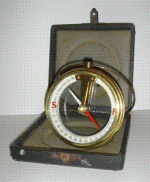- Jun 26, 2008
- 7,786
- 11,136
- Detector(s) used
- Ace 250 (2), Ace 300, Gold Bug 2, Tesoro Cortes, Garrett Sea Hunter, Whites TDI SL SE, Fisher Impulse 8, Minelab Monster 1000, Minelab CTX3030, Falcon MD20, Garrett Pro-pointer, Calvin Bunker digger.
- Primary Interest:
- Metal Detecting
Bought two metal detectors on E-Bay today. The design dates back over 400 years. Anyone figure out what I bought? I'll tell you soon, don't jump off that bridge just yet. TTC
Amazon Forum Fav 👍
Upvote
0








